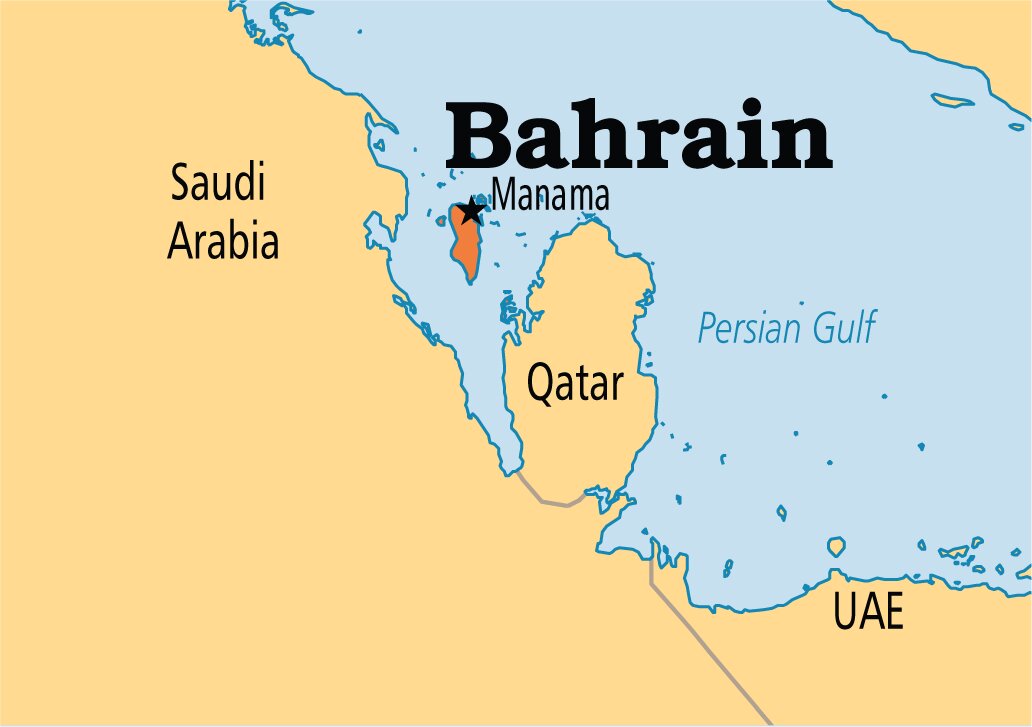Social Justice
Children Abandoning Education in Mica Mining Districts
The survey on ‘education & well-being of children in mica mining areas of Jharkhand and Bihar’ has revealed that over 5,000 children, in the age group of six to fourteen, have left schools to work as labourers to supplement their family income.
- This survey was conducted by the National Commission for Protection of Child Rights (NCPCR) from May 2018 after a report by Terre Des Hommes (an international development agency) revealed that more than 22,000 children are employed as child labourers in the mica mining areas of Jharkhand and Bihar.
- The survey was conducted in the districts of Koderma and Giridih in Jharkhand and Nawada district in Bihar.
Key Findings
- 4,545 children, in the age group of six to fourteen years, in the area of Jharkhand, were reported as not attending schools.
- 649 children were reported as not attending schools in Nawada district of Bihar.
- Reasons: Lack of enough opportunities, lack of interest and mica scraps collection.
- Several families do not see the benefit of sending their children to school and instead prefer them working in collecting and selling mica scraps.
- Selling mica scraps is the main means of livelihood for many families in these districts.
- Malnourishment: In case of Giridih and Koderma, the undernutrition cases reported in 14% and 19% of the habitations and villages, respectively in the survey area.
- In case of Nawada, 69% habitations have reported that some children are undernourished.
- Recommendations:
- NGOs/development agencies should work with the local and district administration as well as with the industries to chalk out a strategy to make the supply chain of mica mining, free of child labour.
- There should be a strict action against buyers of mica scraps from children.
- A special drive to abolish child labour in the mica mining areas of Jharkhand and Bihar should be carried out by the administration.
- Rehabilitation centres for such children and residential schools for girls in the areas, should be opened.
- The districts need to ensure proper implementation of child right laws.
National Commission for Protection of Child Rights
- NCPCR is a statutory body set up in March 2007 under the Commissions for Protection of Child Rights (CPCR) Act, 2005.
- It is under the administrative control of the Ministry of Women & Child Development.
- The Commission's mandate is to ensure that all laws, policies, programmes, and administrative mechanisms are in consonance with the child rights perspective as enshrined in the Constitution of India and also the UN Convention on the Rights of the Child.
- It inquires into complaints relating to child's right to free and compulsory education under the Right to Education Act, 2009.
- It monitors in the implementation of Protection of Children from Sexual Offences (POCSO) Act, 2012.
International Relations
India-Bahrain
The Prime Minister of India, during his visit to Bahrain, launched a USD 4.2 million redevelopment project of the 200-year-old Lord Sri Krishna temple in the Bahraini capital, Manama.
- This is the first time that an Indian Prime Minister has visited Bahrain.

- The heritage and the 200-year-old legacy of the Shreenathji (Shree Krishna) temple in Manama will be highlighted in the redevelopment and the new iconic complex will house the sanctum sanctorum and prayer halls.
- India and Bahrain also agreed to enhance cooperation in the field of security and counter-terrorism.
- In a joint statement, both the countries urged the international community to reject terrorism infrastructures and to cut off any kind of support to the terrorists.
- An MoU was also signed between BENEFIT, a Bahrain company handling ATM and POS transactions among others, and National Payments Corporation of India (NPCI) for launch of RuPay card.
- The two countries also signed MoUs on cultural exchange programme, space technology, solar energy.
- India welcomed the interest of Bahrain to join the International Solar alliance (ISA).
- Both the sides also emphasised on the urgent need to pursue UN reforms, including the Security Council through an expansion of both categories of its membership, to make it more representative and effective in tackling global challenges.
Indian Economy
Panel on Power Reforms
The Centre has formed a high-level group to make recommendations for changing the structure and system of power sale and purchase in the country.
- Led by the Special Power Secretary - Sanjiv Nandan Sahai, the group will recommend reforms needed in Power Purchase Agreements (PPAs) and for increasing competitiveness in the power markets.
- The Panel has been given six months for submitting its recommendations.
Problems within the Power Sector
- Power sector has witnessed a huge growth in terms of capacity addition during the last few years but it is reeling under stress as the mismatch in demand and supply, has led to stressed power assets or non-performing assets (NPAs).
- About 34 power plants in the country amount to about ₹1.40 lakh crore NPAs.
- Reasons behind huge NPAs: Capacity addition without tied-up PPAs with Distribution Companies (DISCOMs), coal supply issues, the inability of DISCOMs to pay to generators, regulatory issues, the inability of promoters to infuse equity, tardy implementation etc.
- Power distribution companies have historically entered into long term PPAs with the generating firms for the supply of power and appropriate regulatory commissions determine tariffs.
- Volatility of Prices in Power Trading: The power procured from power exchanges consists of around 3-4% of total power procured in the country. The comparatively smaller proportions of power procured through power exchanges result in lower depth and higher volatility of power prices in the power exchanges.
Biodiversity & Environment
Clouded Leopards and Their Habitats
Recently a study conducted in nine countries (Bhutan, Nepal, India, Peninsular Malaysia, Thailand, Vietnam, Cambodia, Laos, Myanmar) suggested that only 9.44% of the studied region was ‘highly’ suitable for clouded leopards (Neofelis nebulosa).
- In India, the Dampa tiger reserve in Mizoram was chosen as the study site.
- Dampa had one of the highest population densities of clouded leopards, among the sites surveyed.
- Clouded leopard:

- Named after cloud shaped pattern on its skin.
- It is listed as Vulnerable on the IUCN Red List.
- It is the State animal of Meghalaya.
- It has been added to India’s Recovery Programme for Critically Endangered Species to aid more research and strengthen conservation efforts.
- Habitat:
- Clouded Leopard prefers grassland, shrubs, subtropical and dense tropical forest up to a height of 7,000 feet occurring from the Himalayan foothills through mainland Southeast Asia into China.
- In India, it occurs in Sikkim, northern West Bengal, Meghalaya subtropical forests, Tripura, Mizoram, Manipur, Assam, Nagaland and Arunachal Pradesh.
- Clouded leopard’s presence is positively related to:
- Dense forest cover
- High rainfall
- Hard terrain
- Low human presence
- Factors affecting Clouded leopards distribution:
- Deforestation
- Changing rainfall patterns
- Human-animal conflict
- Development projects
Thus, steps should be taken to make land-use and development policy to facilitate coexistence of people alongside clouded leopards as umbrellas for wider nature.
Dampa Tiger Reserve
- It is located in Mizoram.
- It received the status of a tiger reserve under Project Tiger.
- Recently in the news, as the tigers were estimated to be zero as part of the latest all India tiger estimation exercise.
Integrated Development of Wildlife Habitat (IDWH)
- It is a centrally sponsored scheme launched to provide technical and financial assistance to States/UTs for protection of wildlife habitat.
- The activities covered under the scheme include
- Staff development and capacity building,
- Wildlife research and evaluation
- Anti-poaching activities
- Wildlife veterinary care
- Addressing man-animal conflict
- Promoting eco-tourism.
- Financial assistance is also provided to States for the relocation of communities from within protected areas to other areas.
- The scheme includes three components:
- Support to Protected Areas (National Parks, Wildlife Sanctuaries, Conservation Reserves & Community Reserves)
- All Protected Areas (PAs) in different states are eligible for assistance, except those areas which receive assistance under Project Tiger.
- Protection of Wildlife outside Protected Areas Many wildlife habitats fall outside the network of protected areas.
- Under this component, funds are granted against Biodiversity Plans prepared by Chief Wildlife Wardens of the respective States. Priority is given to regions contiguous to the Protected Areas.
- Recovery Program for critically endangered habitats and species
- 16 species have been identified for recovery under this component. These are snow leopard, bastard, dolphin, hangul, Nilgiri Tahr, marine turtles, dugongs, edible nest swiftlet, Asian wild buffalo, Nicobar Megapode, vultures, Malabar Civet, Indian rhino, Asiatic lions, Swamp deer, Jerdon’s Courser and Brown antlered deer. A scientific Recovery Plan has to be prepared by the Chief Wildlife Warden in each state.
- Support to Protected Areas (National Parks, Wildlife Sanctuaries, Conservation Reserves & Community Reserves)
Science & Technology
Gravitational Lensing
USA's space agency NASA is planning to launch James Webb Space Telescope (JWST) in 2021, which will use a natural phenomenon called “gravitational lensing” to carry out astronomical observations.
- JWST will study every phase in the history of our Universe, ranging from the first luminous glows after the Big Bang, to the formation of solar systems capable of supporting life on planets like Earth, to the evolution of our own Solar System, etc.
- For achieving this objective NASA has launched a program called Targeting Extremely Magnified Panchromatic Lensed Arcs and Their Extended Star Formation, or TEMPLATES.
Gravitational Lensing
- The phenomenon of gravitational lensing occurs when a huge amount of matter, such as a massive galaxy, cluster of galaxies or a black hole, creates a gravitational field that distorts and magnifies the light from objects behind it.
- Gravitational lensing is based on Einstein's theory of general relativity (Mass bend light).
- Normal lenses such as the ones in a magnifying glass work by bending light rays that pass through them in a process known as refraction, in order to focus the light somewhere else.
- Similarly, the gravitational field of a massive object causes light rays passing close to that object to be bent and refocused somewhere else.
- The more massive the object, the stronger its gravitational field and hence the greater the bending of light rays - just like using denser materials to make optical lenses results in a greater amount of refraction.
- In effect, gravitational lenses act like natural cosmic telescopes.
- The effect allows researchers to study the details of early galaxies too far away to be seen otherwise with even the most powerful space telescopes.
- However, gravitational lensing is very rare as it requires a distant star, black hole and the observer on earth to be well-aligned.
- Also, it can help astronomers to know about black holes, dark matter, etc.
Important Facts For Prelims
CSIR-National Physical Laboratory
Recently, the Union Environment Ministry has designated the Council of Scientific and Industrial Research-National Physical Laboratory (CSIR-NPL) as national verification agency for certifying instruments and equipment for monitoring emissions and ambient air.
- CSIR-NPL shall develop the necessary infrastructure, management system, testing and certification facilities conforming to international standards.
- After launching of National Clean Air Programme (NCAP), there has been a boom in equipment for real-time monitoring of air quality.
- NCAP envisages 20-30% reduction in PM 2.5 (fine, respirable pollution particles) by 2024 and PM 10 (coarse pollution particles) concentration in 102 non-attainment cities over 2017 levels.
- Currently, New Delhi leads the numbers of cities in air quality sensors, with around 35 of them.
CSIR- National Physical Laboratory of India
- The CSIR- National Physical Laboratory of India, situated in New Delhi, is the measurement standards laboratory of India.
- It maintains standards of SI units in India and calibrates the national standards of weights and measures.
- The National Physical Laboratory was conceptualized in 1943 by the Governing Body of CSIR, with a view to make science and technology as a means for industrial growth and development.
- Pandit Jawaharlal Nehru, the then Prime Minister of India, laid the foundation stone for the laboratory on January 4, 1947.
Important Facts For Prelims
IMF’s Special Data Dissemination Standard
According to the International Monetary Fund’s (IMF), “Annual Observance Report of the Special Data Dissemination Standard for 2018”, India failed to comply with multiple requirements prescribed in the Special Data Dissemination Standard (SDDS).
- The IMF launched the SDDS initiative in 1996 to guide members to enhance data transparency and help financial market participants with adequate information to assess the economic situations of individual countries.
- There are over 20 data categories which IMF considers for this report to capture a nation’s economic health including national accounts (GDP, GNI), production indices, employment, and central government operations.
- India subscribed to the SDDS on December 27, 1996.
- India held that its non-compliance with IMF standards is one-off event due to technical glitches in the National Summary Data Page (NSDP) web page.
- National Summary Data Page (NSDP) provides quick access to a single comprehensive source of economic and financial data.
Important Facts For Prelims
Advisory Board for Banking Frauds (ABBF)
The Central Vigilance Commission (CVC) has constituted an ‘Advisory Board for Banking Frauds (ABBF)’ to examine bank fraud of over ₹50 crore and recommend action.
- It is headed by the former Vigilance Commissioner, T.M. Bhasin.
- Besides the chairman, the Board consists of three other members. The tenure of the Chairman and members would be for a period of two years from 21st August, 2019.
- Headquartered in Delhi, the Reserve Bank of India (RBI) will provide required secretarial services, logistic and analytical support along with the necessary funding to the board.
Functions
- The four-member board’s jurisdiction would be confined to those cases involving the level of officers of General Manager and above in the Public Sector Banks in respect of an allegation of fraud in a borrowal account.
- It would function as the first level of examination of all large fraud cases before recommendations or references are made to the investigative agencies by the respective public sector banks (PSBs).
- Lenders would refer all large fraud cases above ₹50 crore to the board and on receipt of its recommendation or advice, the bank concerned would take further action in such matter.
- The Central Bureau of Investigation may also refer any case or matter to the board where it has any issue or difficulty or in technical matters with the PSB concerned.
- It would also periodically carry out frauds analysis in the financial system and give inputs for policy formulation related to the fraud to the RBI.





